The CyberAssist website is designed to provide assistance to all businesses working to achieve risk management and compliance goals for cybersecurity. Whether you’re new to cybersecurity, looking to enhance your current defenses, or understanding your compliance obligations, this website offers vetted resources to accelerate your journey. Getting started with cybersecurity is made simple with clear, step‑by‑step guides, beginner‑friendly tutorials, and an inventory of essential tools. Each tile below provides curated content and resources so you can focus on the priorities that matter most to your organization, from threat detection and incident response to policy development and audit readiness.
Cybersecurity Fundamentals
Top 10 High Value Controls, Protecting Data in the Cloud, Resources, Benchmarks, Policies, & Guides, and Training.
Vulnerability and Threat Information
Regulations and Standards
CMMC Compliance
Cybersecurity Maturity Model Certification security requirements grouped by level and by domain. Each requirement contains publicly available resources & clarification from CMMC Model v1.02 Appendix B.
CCRA
Cybersecurity Compliance and Risk Assessment information page containing FAQs, a link to download the CCRA excel spreadsheet, and a contact form.
